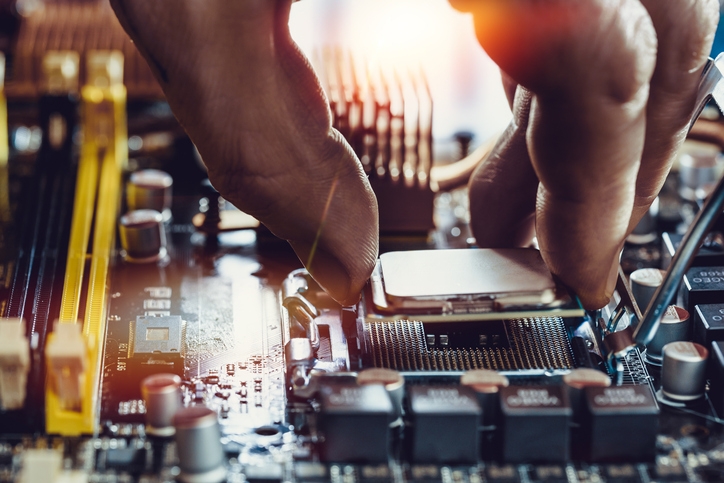Windows 7 and Windows Server 2008 Retirement
What Does This Mean For Your Business In Chicagoland?
Along with everything else you have to do, now you must deal with three major computing issues. If you’re still using Windows 7 or Windows Server 2008, you won’t be getting the support, patches and updates you need. And if you decide to buy a new computer, you might not have the choices you did before due to the Intel Processor Shortage.
What Does Windows 7 End of Life Mean For Your Business?
If you’re still using Windows 7, your computers could get infected with malware. Despite being a very popular operating system, Microsoft announced they are stopping mainstream support for Windows 7. All support for Windows 7 will end on January 14, 2020. This is a popular operating system, so this creates concern for many.
Microsoft is already displaying pop-ups on all Windows 7 computers alerting users that their support will be ending. In March 2019, they announced that they’d be pushing a pop-up notice that’s designed to warn users about the January 2020 end of life date for the product.
What Could Happen When Support For Windows 7 Ends?
This means that you won’t get bug fixes or security updates from Microsoft. Over time, the security and reliability of Windows 7 will make your computers vulnerable to security threats. Cybercriminals are on the look-out for ways to infiltrate your systems and steal important information.
- Computers could be infected by malware,
- Antivirus won’t be updated,
- Online banking transaction protection may expire,
- Confidential data could be breached,
- Compliance with regulations could be in jeopardy, and
- Financial data could be exposed to theft.
An end to bug fixes and those all-important security updates may be the ultimate deal breaker for you. IT managers will tell you that not having these fixes makes your data vulnerable to access by unauthorized parties.
There are options for continued support post-January 2020 if needed (i.e., business application compatibility), but it will cost you to get continued support.
What Can Happen If You Keep Using Windows 7?
Windows 7 won’t be reliable and:
- Your applications may not be updated,
- Your other software could be incompatible,
- Utilities won’t be supported, and
- New devices may not connect to your system.
Plus, computer manufacturers will no longer support Windows 7. This means things like printers, desktops, laptops and more won’t be guaranteed to work as they should. Your security programs and third-party browsers won’t support Windows 7. And, when you or your employees browse the Web, you could be exposed to cyber threats. All of this will take place over time.
What Are The Benefits Of Moving From Windows 7 To Windows 10?
Upgrading from Windows 7 to 10:
- Makes computers run smoother and faster.
- Provides a more economical use of memory and disk space.
- Improves security.
- Boots up your computer from sleep mode faster than before.
You can also benefit from access to features that Windows 7 doesn’t provide:
- Use Cortana – a personal assistant that runs on artificial intelligence (AI).
- Search the Web right from your desktop.
- Get reminders based on time, places, or people.
- Quickly add a virtual desktop.
- With Windows Apps new applications are available on all your devices.
- A brand-new browser, Edge, is better suited to the modern web.
- Track packages, teams, interests, and flights.
- Create and manage lists.
- Find facts, files, places, and info fast.
- Open any app on your system.
With Windows 10’s new application programming interface called Windows RunTime, your Windows Store Apps are remotely installed and updated. They can also be cleanly uninstalled.
Plus, Windows 10 has RunTime apps for Mail, Photos, Maps, Calendar, Groove Music and more. And you can easily download any of the 700,000 applications from the Windows Store. Enjoy apps like:
- Free Microsoft Apps
- AutoDesk
- Adobe Photoshop Express
- Pixlr
- DropBox
- Code Writer
- Fresh Paint
- Line
- OneNote
- TeamViewer
- Trello
- Viber
- Wunderlist
Do You Have Enough Space On Your Computers To Upgrade To Windows 10?
You will need more storage space if your hard drive is 32 GB or less. You can try removing applications you no longer need to free up space. You can also try using Disk Cleanup to free up more space. Microsoft might ask you to attach an external drive to free up space for the upgrade. If you do this, be sure that you keep it in a safe place in case you need it when using recovery options.
Should You Purchase New Computers?
If you’re using Windows 7, getting a new device with the Windows 10 operating system is recommended. Today’s computers are faster and more powerful and durable. Newer computers also have a longer battery life and provide increased security.
Modern computers are typically less expensive than they were eight years ago. Total cost of ownership studies show that it’s wise to replace your computers at least every four years.
Plus, if you purchase a new computer with Windows 10 (or other business equipment) before the end of the year, you can take advantage of the 179 Tax Deduction. Section 179 always expires each year at midnight, December 31st. To take advantage of it this year, you must buy (or lease/finance) your equipment and put it into use by midnight 12/31/2019.
Intel recently experienced a shortage in their Central Processing Units (CPUs) that is supposed to ease by August or September. Bob Swan, Intel’s CPU said that they are prioritizing production of their higher-end processors to deal with the shortage. (Read more about this below.)
What Does The Windows Server 2008 End of Life Mean For Your Business?
On July 9, 2019, support will come to an end for all Windows Server 2008 and 2008 R2 equipment. If you’re still using these servers, it’s important to act now so that there’s no disruption to your daily operations or loss of data. Any hardware or software product that reaches its end of life is a potential gateway for hackers to enter through.
What Can Happen if You Wait to Upgrade?
Windows Server 2008 has been around since the mid-2000s. While many business owners have been using it for years without problems and have relied on this equipment for daily work, as the End of Life (EoL) nears, it’s essential to make arrangements to replace these servers.
At EoL for any product, you won’t get the support you need: Patches and upgrades will no longer be distributed, and if you have problems, you’ll have to pay more for IT help. In addition, these servers pose a security risk even now because they’re older and easier for hackers to break into.
The newest line of servers comes complete with better cybersecurity features already built in. Just as with newer software products and browsers, most manufacturers are constantly perfecting security protocols to keep hackers out.
Once EoL for SQL 2008 or 2008 R2 arrives on July 9, 2019, users could run into problems like unresolvable outages. This could result in reduced productivity and lost data – and as we know, downtime costs money.
When Should You Change Out Your Servers?
If you’re still using SQL Server 2008 or 2008 R2, now is the time to make the upgrade. It takes time to transfer all your data over to new servers; this process can be tedious and usually requires a few days or weeks to complete.
You’ll need your best IT hands on deck because this is an intricate procedure that must be done correctly to avoid conflicts with other equipment. It’s crucial to maintain the highest security while moving data so cyber thieves can’t break in and steal data during the process.
If you have a small, in-house IT department, it can be beneficial to hire some help from a reputable local Managed IT Service Provider. Keep in mind that your in-house staff is likely to be less experienced with moving data over to new servers.
IT service providers can provide an added advantage as this is the type of work most do every day — They’ll know exactly what needs to be done and how to go about it. They can also get the job done during nights, weekends or when your business is closed, so the change out of servers doesn’t disrupt your employees’ work.
Although this type of upgrade may seem like a huge headache, it’s necessary to ensure business continuity and to mitigate significant risk to your business. And, once you get everything moved over to your new servers, you’ll be pleased with the faster speeds and better service they provide.
How Can Your Compliance Be Affected?
If you don’t upgrade your servers, when processing credit-card transactions you may not meet PCI-DSS standards if you continue to use out-of-date servers. This could result in penalties and fines. For others who must comply with industry regulations, it’s very important to make the switch. Anyone in healthcare, legal or government organizations can be heavily fined for compliance violations. As we’ve noted already, the chances of a data breach are much higher when using out-of-date software or hardware.
How Does The Server Upgrade Process Work?
In order to complete this process successfully, you’ll need to map out a plan before beginning. Start with a list of all your IT assets. Then check to make sure all this is compatible with the new servers. Double check to make sure that all security protocols will be in place before, during and after the upgrade.
Good planning is an important part of the server change-out process. You can reduce downtime and inconvenience to your business operations when you plan correctly. Be sure to stay in contact with your IT department or IT service company. They should be supplying you with daily reports about how the process is moving along.
What Is The Intel Processor Shortage?
The first signs of the shortage in Intel’s 14nm processors appeared in May 2018. The shortage has resulted in increased prices, unreliable availability for some processors, the unavailability of chipsets, and many complaints from Intel’s partners.
Vendors reported that Intel’s H-series chipsets were in short supply, or not available at all due to overbooked 14nm production. Much of the 14nm demand also comes from Intel’s data center business – it has expanded by 27% quarter-over-quarter. Intel also said the shortage was due to an unexpected $4.5 billion increase in demand. But other contributors may have been a factor, like the delay of their 10nm node.
The planning for silicon production capacity is a multi-year process. It takes time to get facilities and tooling in place for mass production. So, the delay for the 10nm process probably resulted in production challenges by pushing more unanticipated demand back to the 14nm production lines.
Plus, Intel started shipping their Purley platform and preparing for the Cascade Lake Xeons. These large processors have up to 28 cores. Manufacturing them reduces the number of die that Intel can harvest per wafer. And with Intel’s Coffee Lake lineup and 9000-series processors featuring more cores than previous processors, Intel is having problems with their wafer output.
Intel also launched its Whiskey Lake and Amber Lake processors last year. As with all of these launches, they had to ramp up production significantly. And this is continuing as they are bringing their 14nm XMM 7560 modems online for Apple. This means millions of modems for iPhones, so Intel will make this a priority.
How Has Intel’s CPU Shortage Affected Buyers?
The shortage has had a widespread impact on buyers. PC shipments scaled back for some Original Equipment Manufacturers (OEMs). Companies like Asus and Acer had lower-than-expected sales. Other Intel Channel Partners suffered from delayed shipments and higher prices. And Lenovo North America reported that the shortage impacted their sales. To compensate the offered Arm- and AMD-based PC’s instead.
Initial concerns about the shortage came up after Intel acknowledged production issues and was poised to launch its new 9000-series processors. Although some believe that there will be a delay with this like there was with the 2017 launch of Coffee Lake CPUs.
In July of 2018, Intel confirmed 14nm supply challenges, and that they were working intently with their customers and factories to be prepared so they wouldn’t negatively affect their customers’ growth.
How Have Businesses In Chicagoland Been Impacted By The Intel Processor Delays?
Many of Intel’s less expensive models, such as the Core i5-8400, i5-8500, i5-8600 and i7-8700, have been selling well above the Manufacturers Suggested Retail Price (MSRP). However, the market for these lower-end models, like the Core i3 or Pentium is typically students during that school computer buying season from June to September.
The lack of lower-end CPUs wasn’t a significant issue for most businesses because they typically buy higher-end products like the Intel Core i5 and up. The more expensive SKUs, such as the K-series models, haven’t been impacted.
But, the Core i7-8700K is also experiencing unreliable availability issues. It continues to be Amazon’s number one seller in the U.S., so the sporadic availability hasn’t significantly impacted Amazon’s sales… at least not yet.
It’s revealing that prices are increasing on Intel’s less-expensive models and how Intel prioritizing production of its higher-margin products may be causing this. Unfortunately, some believe that this could also be an early sign of a more severe shortage.
Intel typically prioritizes their high-volume customers during supply shortfalls like this. They divert limited supply to these customers first. Because Intel is struggling to fill these prioritized orders indicates that this could spell trouble for the retail market. CP Wong, president of notebook ODM Compal Electronics, said that 14nm supply issues could have more of an impact on the PC industry than the U.S.-China trade war.
Intel’s CPU Shortage Get Worse?
All of these factors suggest that the shortage could become more severe. Kent Tibbils, vice president of marketing at ASI, a Fremont, CA-based distributor, told CRN that if Intel’s CPU supply is set to improve by June or July, that he expects ASI will likely be caught up by August or September. This is due to the time it takes the supply to get built up throughout the entire channel.
What’s Happening With Intel’s Processor Delays Now?
In the several months since Intel’s shortage began, the company has announced new initiatives to improve processor supply, including an additional $1 billion in manufacturing capacity. Intel is prioritizing production of higher-end CPUs over lower-end products. However, despite this there have still been some shortages with those products, resulting in delays and longer lead times for customers.
Intel says that they are prioritizing higher SKUs, but not to expect abundant supplies. They have also committed to improving communications and transparency with their partners about the shortage.
Where Can You Get More Information?
In most cases, it can be highly beneficial to give your entire upgrade project over to a Chicagoland IT Service Company. Your IT professional can handle the entire transfer of data and install and set up your new servers and computers correctly. This can minimize problems and downtime.
And, if your in-house IT department hasn’t done this before, they could run into all sorts of issues that would be avoided by working with a skilled, experienced team. Your IT company can also help you make informed decisions about when to upgrade or make changes to your other software or hardware.
Check out our Tech Insights for more information about changes occurring in business IT today.






